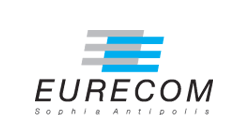In the realm of modern automotive technology, vehicles now incorporate a range of advanced features, such as Advanced Driver Assistance Systems (ADAS), infotainment systems, and autonomous driving technologies. In response to the complexities of wiring and the imperative for improved network performance, a shift is occurring from conventional domain-based In-Vehicle Network (IVN) architectures to zone-based configurations. Similarly, there’s a transition from traditional IVN protocols to Ethernet-based alternatives. Additionally, the adoption of Time-Sensitive Networking (TSN) is increasing, allowing for deterministic data transmission via Ethernet networks. The combination of TSN with zone-based architectures holds the potential for optimizing data transmission and reducing End-to-End (E2E) delay its variation (Jitter), hence ensuring the desired service level agreement (SLA) and enhancing the quality of experience (QoE). Our contribution involves simulating an IVN architecture where diverse Electronic Control Units (ECUs) are segregated into zones and interconnected via Ethernet. Our work includes implementing Asynchronous Traffic Shaping (ATS) standard in TSN for improved experiments with different ATS parameters and analyze their impact on E2E delay and jitter. The results demonstrate the efficiency of TSN, specifically ATS, in the IVN environment.
Asynchronous time-sensitive networking (TSN) implementation in automotive zone-based architecture
LATINCOM 2024, IEEE Latin-American Conference on Communications, 6-8 November 2024, Medellin, Colombia
Type:
Conference
City:
Medellin
Date:
2024-11-06
Department:
Communication systems
Eurecom Ref:
8007
Copyright:
© 2024 IEEE. Personal use of this material is permitted. However, permission to reprint/republish this material for advertising or promotional purposes or for creating new collective works for resale or redistribution to servers or lists, or to reuse any copyrighted component of this work in other works must be obtained from the IEEE.
See also:
PERMALINK : https://www.eurecom.fr/publication/8007



